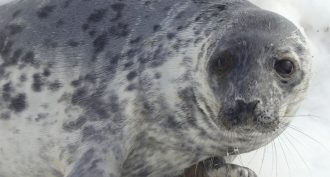
Tina Hesman Saey
Senior Writer, Molecular Biology, Science News
Science News senior writer Tina Hesman Saey is a geneticist-turned-science writer who covers all things microscopic and a few too big to be viewed under a microscope. She is an honors graduate of the University of Nebraska-Lincoln where she did research on tobacco plants and ethanol-producing bacteria. She spent a year as a Fulbright scholar at the Georg-August University in Göttingen, Germany, studying microbiology and traveling. Her work on how yeast turn on and off one gene earned her a Ph.D. in molecular genetics at Washington University in St. Louis. Tina then rounded out her degree collection with a master’s in science journalism from Boston University. She interned at the Dallas Morning News and Science News before returning to St. Louis to cover biotechnology, genetics and medical science for the St. Louis Post-Dispatch. After a seven year stint as a newspaper reporter, she returned to Science News. Her work has been honored by the Endocrine Society, the Genetics Society of America and by journalism organizations.

All Stories by Tina Hesman Saey
-
 Genetics
GeneticsWhere Native Americans come from
All tribes seem to derive from the same Asian roots, DNA indicates.
-
 Microbes
MicrobesArctic thaw is spreading wildlife diseases
Polar animals are encountering new, killer parasites as melting ice unlocks their access to new hosts.
-
 Genetics
GeneticsBlue eyes in the Stone Age
Genes from an ancient skeleton suggest that dark-skinned people may have been the first to evolve blue eyes.
-
 Health & Medicine
Health & MedicineNobel goes for studying ‘school buses’ in cells
A trio of scientists who studied how cells transport materials — think of buses moving kids to and from school — will share a 2013 Nobel Prize.
-
 Health & Medicine
Health & MedicineCamels linked to mystery disease
A mysterious and deadly virus has sickened 94 people — killing 46 — in parts of the Middle East, Europe and northern Africa. A new study finds that camels (the one-humped type) may have introduced the new disease to people. The germ responsible is a virus that lives in people’s lungs, throats and noses. Scientists recently named the disease it causes Middle East respiratory syndrome, or MERS.
-
 Microbes
MicrobesHitting the redo button on evolution
Scientists are experimenting with bacteria to see if evolution plays out the same way every time.